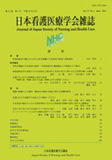Japanese
English
- 有料閲覧
- Abstract 文献概要
- 参考文献 Reference
要旨
目的:若者と壮年者で死後のケアの好みに違いがあるかどうか明らかにする。
研究方法:一つの大学の一年生および65歳未満の事務職員を対象とし、自記式質問紙調査を行った。「若者」は18─29歳、「壮年者」は30─64歳とした。分析方法は、性別、遺体との対面経験の有無、死後のケアを知っているかどうか、病院で死後のケアを経験したかどうかで調整して、若者と壮年者で死後のケアの好みに違いがあるかどうか、ロジスティック回帰分析を用いて比較した。
結果:若者233名、壮年者114名の合計347名を分析対象とした。若者の方が儀礼に関するケアよりも身だしなみである「ヒゲをきれいにそる」や「マニキュアを塗る」等への希望が高く、壮年者の方が身だしなみよりも儀礼である「鼻に綿をつめる」、「手を組む」等のケアを希望していた。
結論:若者と壮年者では死後のケアの好みに違いがあるため、方法を変えていく必要性が示唆された。
Abstract
Purpose: To compare the preference for care of one's body after death between young and middle age adults.
Method: Participants were first year students and clerical employees at a university who were younger than 65 years old. Questionnaires were distributed so that participants answered by themselves. "Young adults" was defined as ages from 18 to 29 years, and "middle-aged adults" was defined as ages from 30 to 64 years. Logistic regression was used to compare preferences between the two age groups for care of one's body after death after adjusting for gender, experience of seeing dead bodies of friends or relatives, knowledge of care for dead bodies, and experiences in caring for dead bodies at a hospital.
Results: Data from 233 young adults and 114 middle-aged adults, totaling 347 participants, was used for the analyses. Young adults were more concerned with care of appearance, such as "shaving" and "nail polishing" rather than care related to ceremony. On the other hand, middle-aged adults preferred care related to ceremony such as "filling the nose with cotton" and "folding hands together" rather than care related to fashion.
Conclusion: It is necessary to differentiate between the preferences of young adults and middleaged adults regarding care of their body after death since there was a difference in the preference of care.
Copyright © 2011, Japan Society of Nursing and Health Care All rights reserved.


